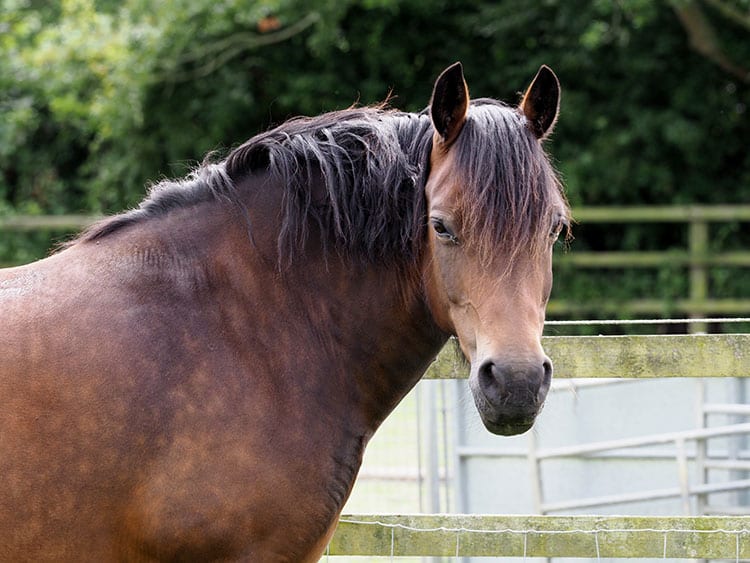Individualized Diets Help Horses With EMS-Induced Laminitis

What Does EMS Look Like?
Horses with EMS have a certain characteristic appearance, said Philip Johnson, BVSc(Hons), MS, Dipl. ACVIM, ECEIM, MRCVS, professor of veterinary medicine and surgery at the University of Missouri, in Columbia.
“To start, EMS horses are often, but not always, obese,” Johnson said during his presentation during the 2021 virtual EquiSummit conference, presented by Kemin Equine. “They also tend to have a cresty neck due to a regional deposition of fat, and many have evidence of laminitis even if they don’t show any foot pain.”
Overweight EMS horses are also often resistant to weight loss and are typically “easy keepers.”
Once a veterinarian suspects EMS, he or she can perform a number of tests to diagnose it. After confirming EMS, the vet will then recommend a variety of preventive management strategies.
“Preventive strategies intended to lessen the risk of laminitis include reversal of obesity (where applicable), improved level of exercise (if not precluded by laminitis), minimizing stress, lowering the glycemic index of the daily ration while making sure that the amended diet is covering nutritional needs, and careful attention to hoof care,” Johnson said.
Individualized Nutrition
“Horses with EMS must have an individualized nutrition plan in order to successfully manage this condition and control laminitis,” Johnson advised.
He emphasized the importance of a having a nutrient analysis performed on affected horses’ hay.
“Some hays are ‘too rich’ in terms of sugar and starch content and cannot be fed to EMS horses,” he said.
For this same reason, Johnson advised carefully restricting EMS horses’ access to pasture, grain, or sweet feeds.
“They are simply too rich,” he explained. “EMS horses need low-glycemic feeds so that the blood glucose and insulin levels don’t excessively increase after feeding.”
Instead, owners can offer straw to decrease the overall nutritional quality of forage, or they can steam or soak forages. They might also consider feeding proprietary complete rations designed specifically for EMS horses.
Addressing Obesity
If the horse can tolerate exercise (i.e., is not currently experiencing laminitic pain), then owners should add physical activity to their routines.
“It doesn’t take a lot of exercise to see the benefits,” said Johnson.
Exercise, together with dietary restrictions, will help improve obesity; however, owners must be willing to appreciate that their horse is overweight.
“Studies show that owners are not particularly open to acknowledging the fact that their horse is overweight or obese,” said Johnson.
Complicated by Cushing’s
As EMS horses age, Johnson warns owners to be on the lookout for signs of pituitary pars intermedia disorder (PPID, the condition previously referred to as equine Cushing’s disease).
“This neurodegenerative condition develops in horses 15 to 18 years or older and can often coexist with EMS,” Johnson said.
The exact relationship between PPID and EMS remains incompletely understood, but researchers do not believe PPID on its own causes laminitis. If veterinarians identify laminitis in PPID-affected horses and ponies, EMS is likely also present.
“It is the elevated circulating insulin levels in horses with EMS that cause laminitis,” Johnson explained. “Horses with EMS develop more severe laminitis if PPID also develops in that same animal later in life.”
Take-Home Message
The major clinical abnormalities seen in horses and ponies affected by EMS include abnormal body condition (tendency for obesity, cresty neck), hoof changes resulting from laminitis, and potentially lameness. In contrast, horses and ponies affected with PPID tend to be older, gradually lose bodily condition, and develop hair coat abnormalities. If PPID develops in an EMS-affected equid, the resulting laminitis tends to be more severe and difficult to manage.
“Risk of laminitis remains the most important justification for early identification and effective management for both EMS horses and ponies with or without PPID,” said Johnson.

Written by:
Stacey Oke, DVM, MSc
Related Articles
Stay on top of the most recent Horse Health news with












